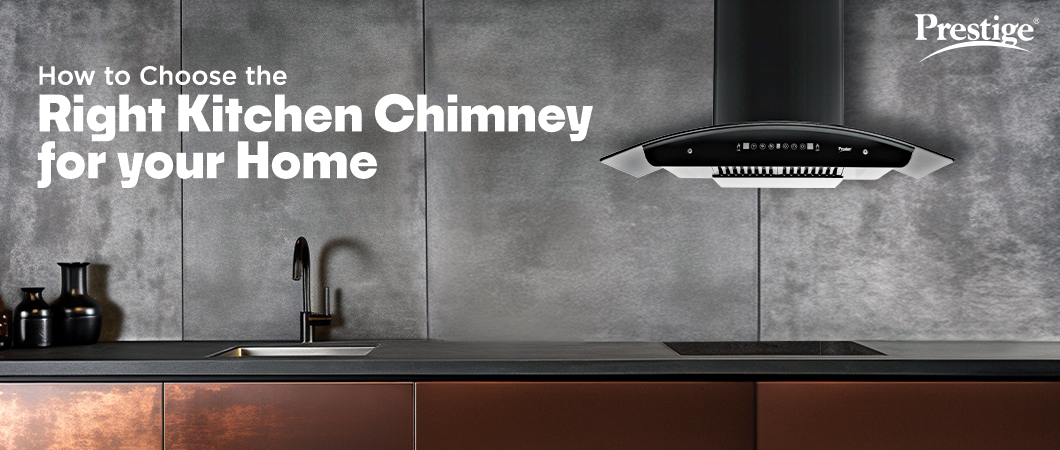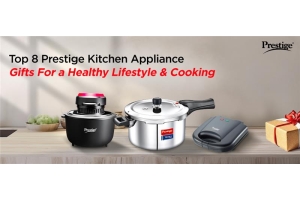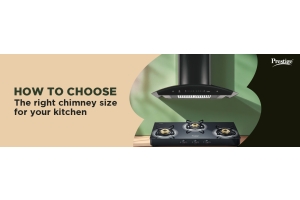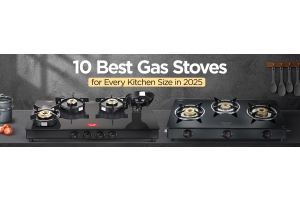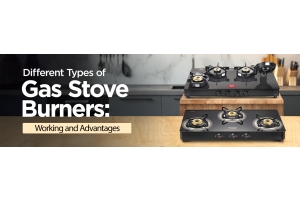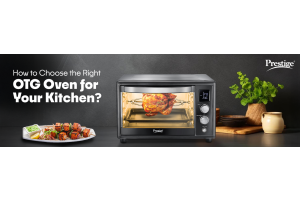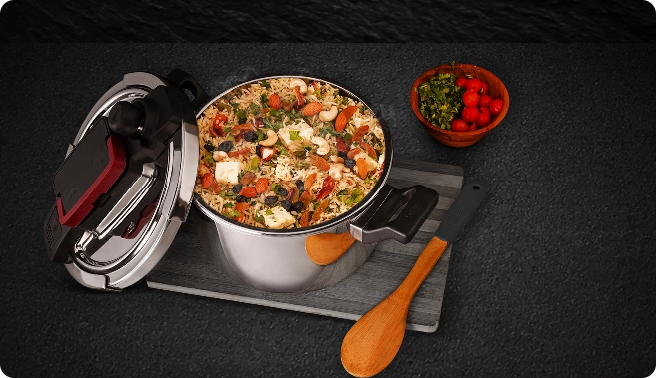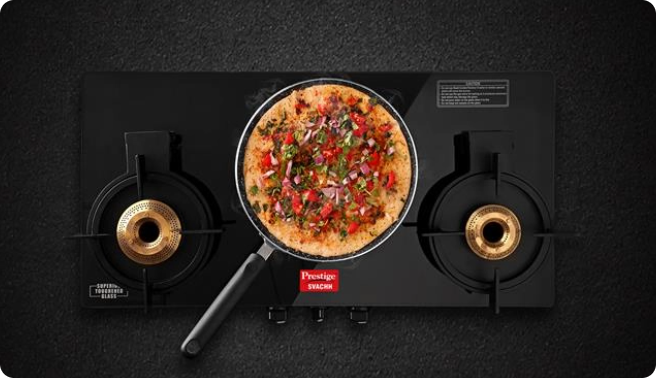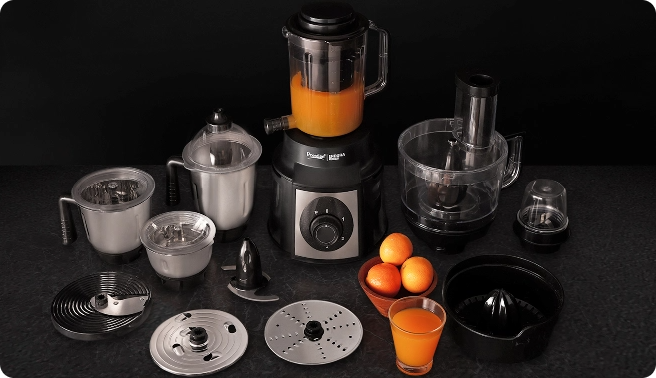Introduction:
Are you thinking of investing in a kitchen chimney for your home? Phew! Decision fatigue can be a pain. While a kitchen chimney might not be your first priority when you are designing or redoing your kitchen, it plays a crucial role in maintaining a healthy and comfortable cooking environment.
In olden times a small hole was made above the stove on the ceiling as an outlet for the smoke and gases produced while cooking. However, this traditional method was not healthy, since it led the smoke to accumulate on kitchen walls, leading them to become dark and oily. A Kitchen Chimney comes in as a relief, tirelessly removing smoke, odor, and fumes from your kitchen and significantly improving your cooking experience.
Understanding the Importance of a Kitchen Chimney at Home
The kitchen chimney is more than just an aesthetic addition to a kitchen. Let us understand what makes it a value addition.
-
Ventilation: It keeps your kitchen fresh and clean by removing fumes, smoke, and odour.
-
Efficiency: Modern kitchen chimneys are equipped to offer high suction power to effortlessly clean air even during heavy cooking sessions.
-
Health Benefits: Chimneys reduce exposure to smoke and fumes that can cause respiratory and eye irritation.
-
Fire Safety: By efficiently venting out the fumes and smoke a kitchen chimney helps you prevent grease fire.
-
Enhance kitchen design: Kitchen chimneys are available in various forms and sizes to suit your kitchen structure and increase its ambiance.
-
Add on features: Some additional features like an automatic cleaning function, built-in lights, and torch controls are available for extra convenience.
What Are The Types of Kitchen Chimney?
There are a variety of kitchen chimneys available for you to choose from, depending on the size, style and layout of your kitchen. Some of these are:
-
Wall Mount: This is the most common type of kitchen chimney, All you have to do is mount it against a wall, just above the cooking range. Both pocket-friendly and reliable, it is a popular choice amongst customers.
-
Built-in Chimney: These chimneys blend effortlessly into kitchen cabinetry, delivering efficient ventilation while maintaining a sleek, minimalist design. Though installation may require cabinet modifications, they provide a space-saving and clutter-free cooking environment.
-
Island Chimney: Designed for kitchens with a cooking island, these kind of chimneys are attached to the ceiling without the support of a wall. They absorb smoke and fumes from all directions and are a great contemporary match for open kitchens.
-
Downdraft Chimney: In this case, the chimney is built into the kitchen countertop and is released to rise up perpendicular to the countertop, as and when needed. It requires additional space below the counter top for installation, but can be great for open layout kitchens that don’t want the chimney hanging down from their ceilings.
-
Telescopic Chimney: Telescopic chimneys extend outwards when in use and retract back into the cabinetry when not needed, offering a sleek and space-saving design. They are ideal for compact kitchens, providing efficient ventilation while maintaining a clean and uncluttered appearance.
5 Factors To Consider When Choosing a Kitchen Chimney
-
Cooking Habits: A kitchen chimney should have the capacity to handle your kitchen needs. Look for a chimney with sufficient suction power, especially if you cook heavy meals most of the time.
-
Kitchen Space: Being proportional to the kitchen space is a must have in any kitchen chimney, both for productivity and aesthetics.
-
Ease of use: A chimney is a long-term investment. Make sure you choose something that doesn’t require too much manoeuvring.
-
Chimney Type: Choose a kitchen chimney that complements your kitchen décor and structure.
-
Budget: Finances are the primary factor to consider when buying any new home appliance. Plan your budget and requirements wisely before investing in a kitchen chimney.
How to Decide the Right Size for Kitchen Chimney?
The size of your kitchen plays an important role when deciding upon the right fit in terms of a kitchen chimney. Small kitchens can do with chimneys that have a low CFM (cubic feet per minute) rating. Similarly, a wall mount chimney is suitable for small kitchens.
For medium-sized kitchens, chimneys with moderate CFM; and for big kitchens chimneys with higher CFM are suitable. An island chimney is suitable for medium and big kitchens that have a cooking island, since it is located at the centre of the kitchen and has higher CFM.
The width of the kitchen chimney should be at least the size of the cooking surface to properly absorb the smoke produced while cooking. Future needs should also be considered while investing in a kitchen chimney. For example, if you plan to expand your kitchen, you must choose a kitchen chimney with a higher CFM rating to accommodate potential growth.
If you live in an apartment then, you must check your building codes for specific regulations and guidelines about chimney size and installation.
Top 5 Features to Consider Before Buying Kitchen Chimney
While buying a chimney, it is very important to keep in mind the following features, that are very useful to make the correct choice:
-
Suction Power: This is the most important feature of a kitchen chimney. It is measured in cubic feet per minute (CFM). Good suction power ensures that all the smoke, dust, steam, and odor are removed from your kitchen.
-
Compatibility and size: The size of the chimney that would be appropriate for your kitchen depends on the size of your cooktop. A chimney smaller than the cooktop will be less effective; and one larger than the chimney might seem out of space.
-
Filter type: Choosing between charcoal, baffle, and mesh filter types is important before choosing any chimney. Baffle filters are more durable, and trap grease and smoke very effectively. Charcoal filters are best for odour control but require regular replacements and maintenance.
-
Noise levels: Noise levels of the chimney are an important factor to be kept in mind. Silent chimneys provide a friendly cooking environment.
-
Ease of Maintenance: Choosing a chimney with a simple and cleaning process can save time and effort in the future.
Budget Considerations for Selecting the right Kitchen Chimney:
While selecting a kitchen chimney, budget with respect to the brand and model is the most important factor to be considered. Renowned brands offer higher prices for their good quality products, based on their reputation, while emerging brands often offer competitive prices and comparable quality.
Getting to features and functionality, basic models with essential features like filters, suction, and controls are generally affordable, while advanced features like touch control, remote operation, and LED lighting can be expensive.
Size and capacity also determine the price. Chimneys with higher suction power and large dimensions tend to be more costly while small size chimneys with basic suction power are often more affordable.
Chimneys made of stainless steel are heavy and durable but can be pricey, while those made of tempered glass or acrylic materials are cheaper due to their compromised durability.
The cost of hiring a professional for installation is an add on to the budget.
Quick tips for budget-friendly choices are:
-
Look for sales or discounts.
-
Compare prices against product offerings
-
Focus on the features you need the most and avoid unnecessary extra cost.
Conclusion: Make the right choice for your home
Choosing the right kitchen chimney is essential for maintaining a clean and healthy kitchen environment. Considering factors like kitchen size, budget, cooking habits, and must-have features can help you arrive at the right kitchen chimney for your house. Focus on features like suction power, noise control, filter type and air control. Also, consider the chimney design that is sure to complement your kitchen interiors.
By thoughtfully evaluating these aspects, you can select a kitchen chimney that enhances your cooking experience, while contributing to the visual appeal of your kitchen.
Frequently Asked Questions (FAQs)
Q1. What should I do if my kitchen chimney makes noise?
A. If your kitchen chimney makes noise, check for obstruction or loose parts and fix it. If the problem persists contact an expert, or the manufacturing company of your chimney.
Q2. How can I prevent grease buildup in my kitchen chimney?
A. Regular cleaning of the filters and the chimney hood is essential for preventing grease buildup. Consider using a grease trap or filter cleaner.
Q3. What should I consider before buying a kitchen chimney?
A. Factors to consider before buying a kitchen chimney:
-
Suction power: suction power is determined according to the size of the kitchen. Small kitchen sizes need chimneys with less CFM (cubic feet per minute) while medium and large kitchens need chimneys with higher CFM.
-
Size: A bigger countertop needs a big kitchen chimney, while a smaller countertop or stove needs a small size chimney.
-
Noise Level: Chimneys with less or no noise are preferable for a peaceful cooking experience.
-
Maintenance: Choose a chimney that simplifies maintenance hassle.
Q4. What is the recirculation mode in the kitchen chimney?
A. In recirculation mode, the filtered air is recirculated back into the room. This is suitable for kitchens without external ventilation.
Q5. How many types of kitchen chimneys are available in the market?
A. There are five major types of kitchen chimneys available in the market:
-
Wall mount Chimney

